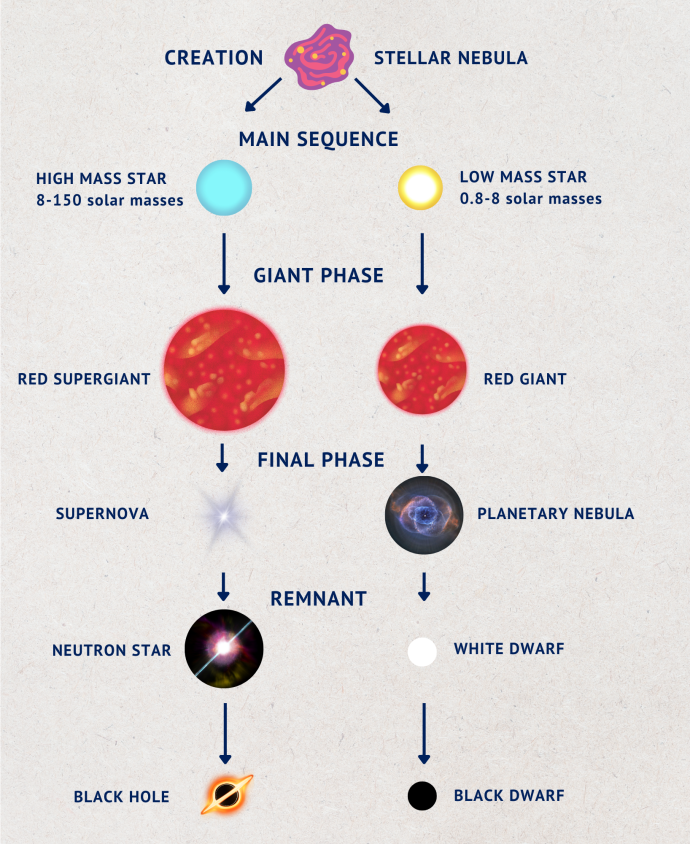Stellar Evolution
All stars form in nebulae, huge clouds of gas and dust.
Though they shine for thousands of years, stars do not last forever. The changes that occur in a star over time and the final stage of its life depends on a star's size.

Mario Hamuy
Early Life
Mario was born in Chile. Although his dad was a politician Mario found a love for science. He got degrees in physics and astronomy from the University of Chile.
Year born: 1960
Research Areas: Observational Astronomy, Supernovae, Cosmic Distances
Stars That Go Bang!
Supernovae are exploding stars which increase in brightness very suddenly and unexpectedly.
Identify the Nebula
The word nebula is used to talk about any dusty, fuzzy objects in space but they can be very different things! Can you classify each image into its proper category?
